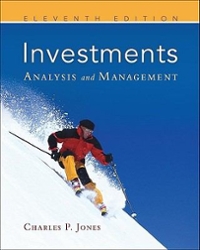
Problem 15-02 Given the following information concerning a convertible bond: Coupon: 5 percent ($50 per $1,000 bond) Exercise price: $24 Maturity date: 20 years Call price: $1,050 Price of the common stock: $29 a. If this bond were nonconvertible, what would be its approximate value if comparable interest rates were 8 percent? Assume that the bond pays interest annually. Use Appendix B and Appendix D to answer the question. Round your answer to the nearest dollar. b. How many shares can the bond be converted into? Round down your answer to the nearest whole number. shares C. What is the value of the bond in terms of stock? Use the number of shares into which the bond may be converted into from part a. Round your answer to the nearest dollar. d. What is the current minimum price that the bond will command? Round your answer to the nearest dollar. $ e. Is there any reason to anticipate that the firm will call the bond? The price of the stock is -Select- the bond's exercise price. So the firm -Select- force conversion by calling the bond. f. What do investors receive if they do not convert the bond when it is called? Round your answer to the nearest dollar. $ g. If the bond were called, would it be advantageous to convert? It -Select- advantageous to convert since the bond's value as stock is -Select- the call price. e. The price of the stock is: higher than / less than / equal to So the firm: could / could not g. It: is / is not bond's value as stock is: higher than / less than / equal to Problem 15-02 Given the following information concerning a convertible bond: Coupon: 5 percent ($50 per $1,000 bond) Exercise price: $24 Maturity date: 20 years Call price: $1,050 Price of the common stock: $29 a. If this bond were nonconvertible, what would be its approximate value if comparable interest rates were 8 percent? Assume that the bond pays interest annually. Use Appendix B and Appendix D to answer the question. Round your answer to the nearest dollar. b. How many shares can the bond be converted into? Round down your answer to the nearest whole number. shares C. What is the value of the bond in terms of stock? Use the number of shares into which the bond may be converted into from part a. Round your answer to the nearest dollar. d. What is the current minimum price that the bond will command? Round your answer to the nearest dollar. $ e. Is there any reason to anticipate that the firm will call the bond? The price of the stock is -Select- the bond's exercise price. So the firm -Select- force conversion by calling the bond. f. What do investors receive if they do not convert the bond when it is called? Round your answer to the nearest dollar. $ g. If the bond were called, would it be advantageous to convert? It -Select- advantageous to convert since the bond's value as stock is -Select- the call price. e. The price of the stock is: higher than / less than / equal to So the firm: could / could not g. It: is / is not bond's value as stock is: higher than / less than / equal to







